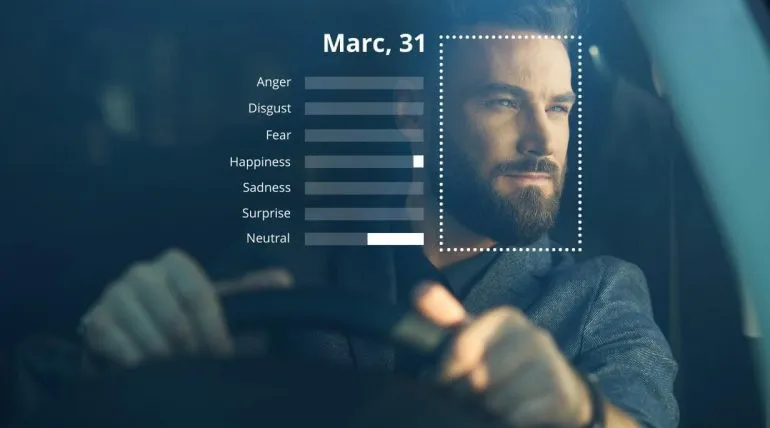What makes a driver monitoring system reliable

Human error is the cause of most car accidents. Fatigue, inattentiveness, distractions, inexperience… it can all easily lead to fatal consequences. To prevent accidents caused by such states, more and more car models come with a built-in driver monitoring system that assists the driver in reaching their destination safely.
Why are driver monitoring systems important?
A driver monitoring system monitors and analyzes the driver’s face in real time. The camera pointed at the driver’s face provides the inputs the computer vision algorithms need to monitor the driver.
The system’s purpose is to look for any signs of fatigue, distraction, anger, or similar states. If the system detects such a state, it can then take appropriate actions.
For example, if the system detects anger, it can try to prevent road rage and reckless actions. It can, for example, offer the driver an alternative route, play their favorite music, slow down the car, and more.
There are many layers to a reliable DMS – from gaze tracking to face recognition. They all need to work together in order to provide a truly reliable level of safety.
> Head and gaze tracking
The basis of a driver monitoring system is head tracking which detects and tracks the driver’s head. Combined with gaze tracking, it allows the system to determine the driver’s viewing direction and attention level.
For example, if the driver is tired or intoxicated, it typically manifests with the head dropping down, closed or barely-open eyes, and sudden head movements as they’re trying to stay awake. The driver can also get distracted by their phone, traffic, or something that’s happening in the car (for example, a heated discussion with other passengers).
In any case, the driver’s focus is no longer on the road ahead, which increases the chances of an accident. DMS can detect such states and warn the driver in order to bring their attention back to the road.
This more advanced system can even adjust the car settings such as seat position or mirrors to the driver’s eyes.
> Face analysis
Face analysis is quickly finding its way into driver monitoring systems because it can extract a lot of useful information from a human face. It can determine a person’s age and gender, but also detect different emotions.
Face analysis can help improve safety and comfort in cars in many ways. It can detect “undesirable” emotions such as anger and intervene by offering alternative routes, slowing the car down, etc. It can also detect child presence in order to avoid vehicular heatstrokes or unattended children. Furthermore, car settings such as content recommendations, lighting, or heating, can be personalized to the driver’s or passengers’ moods and states.
Valuable information gathered from the human face can help address safety concerns on time and optimize in-cabin experiences.
> Face recognition
Driver monitoring systems that can recognize the driver are able to provide a range of useful functionalities.
Only verified persons can get access rights, which prevents car theft. The system can also remember someone’s preferences and restore them when an authenticated person enters the car. For example, the car can automatically adjust the seat, modify the position of mirrors, turn on the driver’s favorite music, and more.
visage|SDK brings safety and comfort to cabins
Driver monitoring systems play a huge role in the transition from manual to (semi)autonomous driving. To truly minimize the work for the driver and maximize safety at the same time, they need to be based on reliable software.
Vehicle manufacturers choose visage|SDK because it combines face tracking, analysis, and recognition, making it easy to develop a comprehensive solution. Our software is also very lightweight and boosts great performance, even in challenging conditions. Contact us to give it a try or let our team build a custom solution for you.
Activate your free trial
Get in touch to start your free trial and explore what visage|SDK can do for your business.

